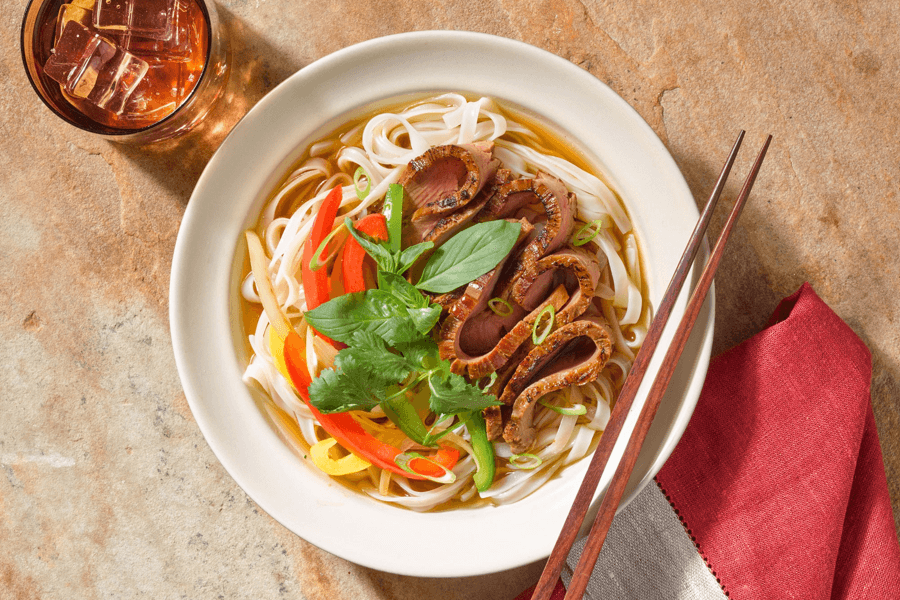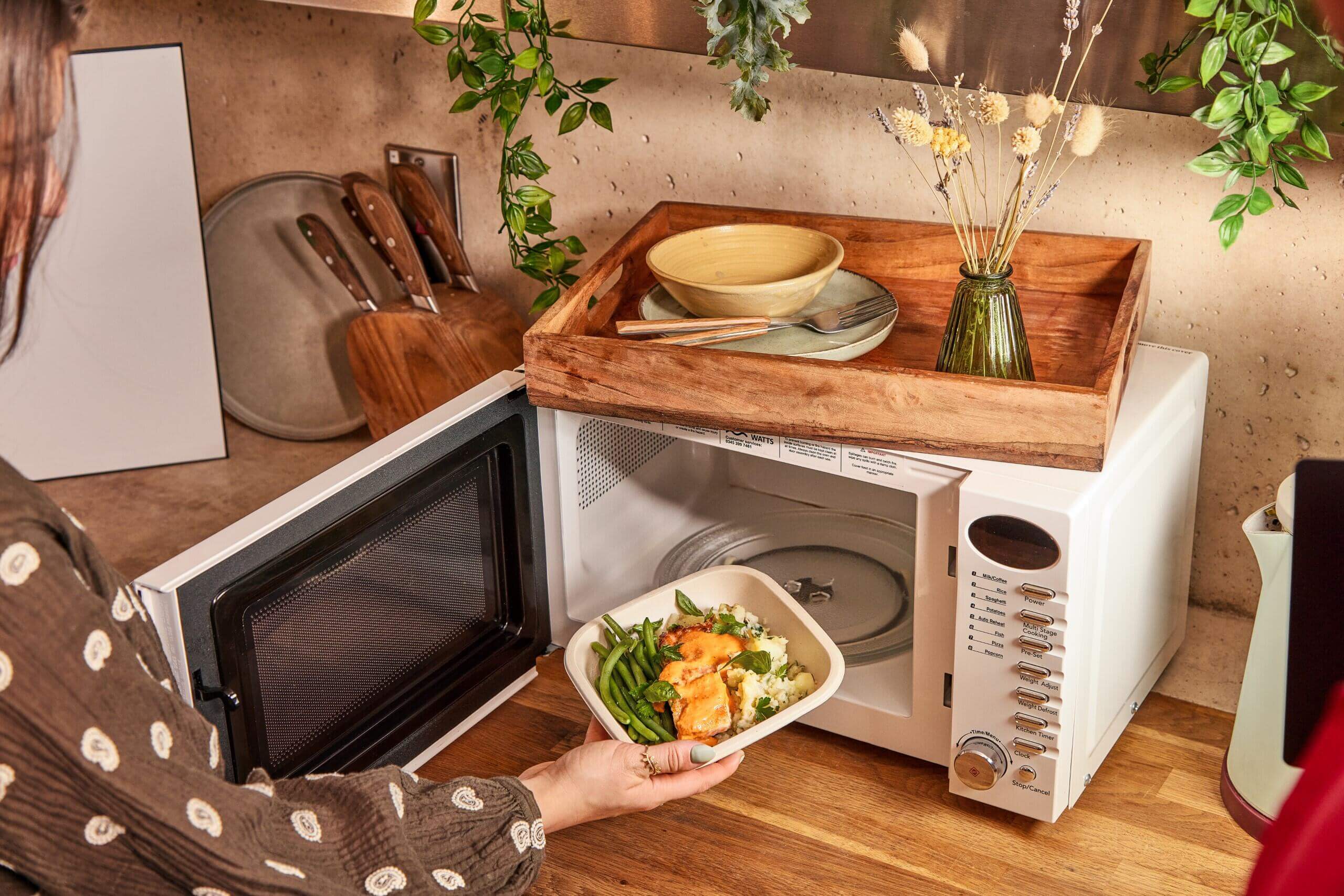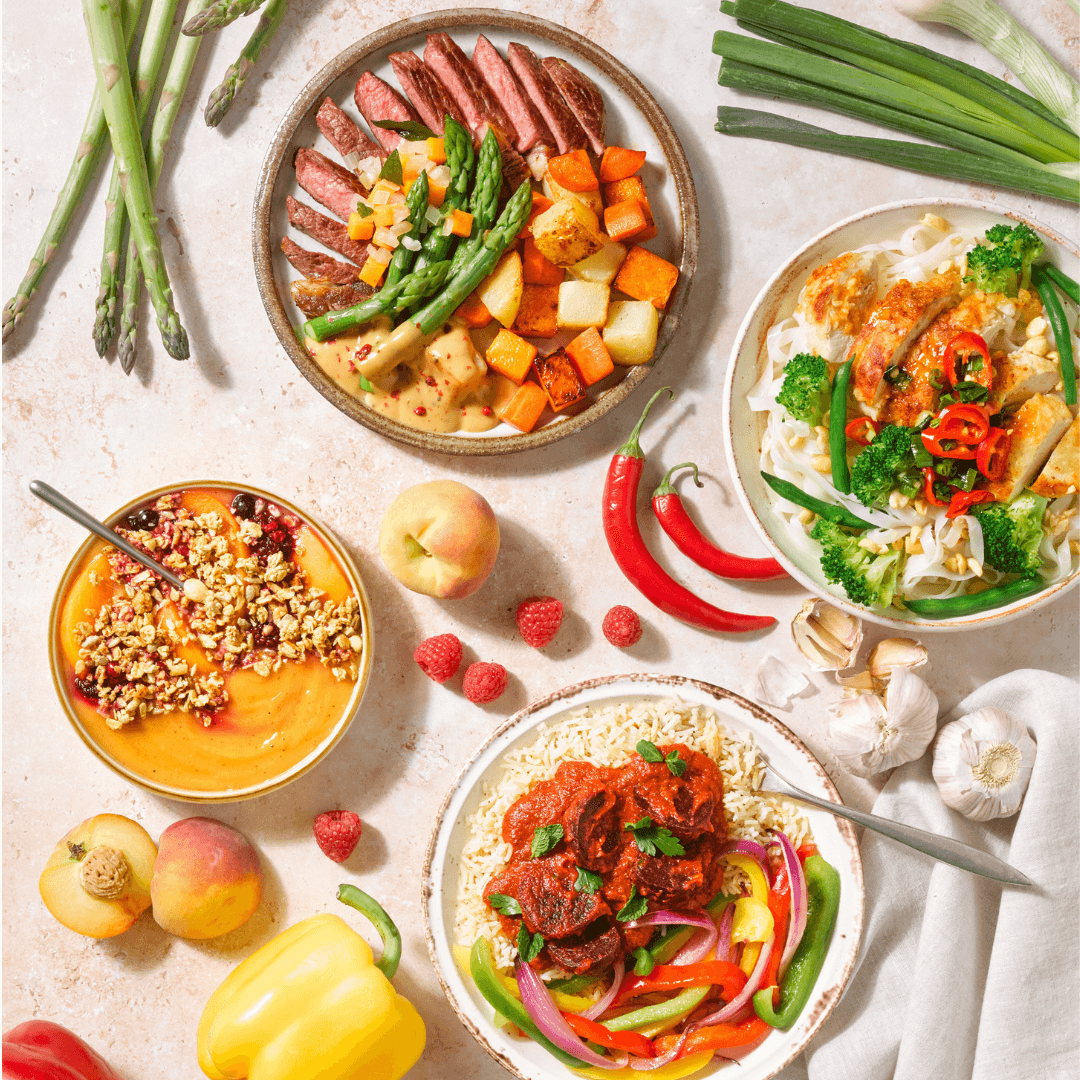Microwave meals have long carried a reputation for being low-quality, heavily processed and nutritionally questionable. For years, “microwave meal” has been shorthand for soggy trays, long ingredient lists and food designed for shelf life rather than health.
But this perception is increasingly out of date. Modern microwave-ready meals, especially fresh, whole-food options, look very different from the ready meals many of us grew up with. And when it comes to the microwave itself, the science is clear: microwaving is not harmful. In fact, it can preserve nutrients better than other cooking methods.
Three in ten UK consumers now eat ready meals each week, driven mainly by convenience and cost. This surge in demand has fuelled a new wave of services, including fresh meal prep brands like Frive, which focus on whole ingredients and balanced nutrition rather than additives or long shelf life.
This article explores the science behind microwave cooking, separates fact from fiction, and looks at why the healthiness of a microwave meal ultimately depends on the ingredients inside it. It also highlights how nutrition-first services like Frive are reshaping what quick, healthy eating can look like.
Why microwave meals have a bad reputation
For the most part, microwave-ready meals have a poor reputation, often perceived as food built for long shelf life rather than real nutrition. They often contained preservatives, stabilisers, flavour enhancers and high levels of salt, sugar and cheap oils, with very few whole ingredients. The result, an inconsistent texture and meals that looked and tasted heavily processed.
Because these products are usually reheated in a microwave, the appliance has been blamed for issues caused by the ingredients themselves. This has led many people to assume that all microwave meals are unhealthy.
This viewpoint is beginning to change.
Growing awareness of ultra-processed ingredients, along with a more competitive ready-meal market, is pushing both consumers and supermarkets toward healthier, whole-food options. Fresh, chef-prepared meals that use the microwave for quick reheating rather than long-term preservation are becoming increasingly popular.
Understanding microwave cooking and nutrition: Are microwave meals healthy?
Microwaves heat food by exciting water molecules. They use non-ionising radiation, meaning they cannot make food radioactive or harmful. Cancer Research UK confirms microwaving is safe when used correctly.
Microwaving can also preserve nutrients better than boiling or frying. Harvard Health notes that the shorter cooking times and minimal water help protect heat-sensitive vitamins such as vitamin C and B vitamins.
The challenge has never been the microwave. It has been the meals people associate with it. Many older supermarket ready meals were ultra-processed and built for long shelf life, often containing fillers, stabilisers and refined starches.
A whole-food meal does not lose its nutritional value because it is microwaved. When the ingredients are good, the microwave is simply a quick, efficient way to heat food while keeping flavour and nutrients intact.

Try Now: Frive’s Korean-Style Beef Bowl, with over 40g of protein
Six microwave meal myths BUSTED
Microwave meals often get an unfair reputation. Many of the beliefs that persist today come from early misunderstandings about how microwaves work and what is actually inside ready meals. Modern research tells a very different story.
Myth 1: Microwaving destroys nutrients
Microwaving preserves more nutrients than many other methods.
- - Harvard Health confirms microwaving often retains more vitamins because it uses less heat, less water and shorter cooking times.
- - Heat-sensitive nutrients such as vitamin C and many B vitamins remain more stable when microwaved than when boiled.
- - Studies also show minerals like calcium, magnesium, and potassium can remain higher in microwaved vegetables.
The takeaway: Microwaving is one of the gentlest and most efficient ways to cook or reheat food.
Myth 2: Microwaves are unsafe (plastics)
When used correctly, microwaves are completely safe. Microwaving food does not make it radioactive or cause any chemical changes that harm health. The microwave energy used in cooking is non-ionising, meaning it cannot alter DNA or create toxins.
The only real risk is using the wrong container. Stick to microwave-safe glass, specified plastic containers, or ceramic, and avoid containers not designed for heating.
The takeaway: The microwave is safe. The container you choose matters.
Myth 3: All microwave meals are junk food
The cooking method is not the problem. The ingredients are.
Supermarket meals are traditionally high in salt, sugar or additives, which is why microwave meals gained a poor reputation. But heating food in a microwave does not change its nutritional quality.
Brands that use whole ingredients and balanced recipes, such as Frive, produce meals that remain nutritious after microwaving.
The takeaway: A whole-food meal stays healthy whether you microwave it or heat it in a pan.
Myth 4: Even healthy ready meals become unhealthy when microwaved
This idea is outdated. Fresh, well-balanced meals keep their nutritional value in the microwave.
Modern chef-prepared meals are made from real ingredients, lean proteins, vegetables and clean oils. Without preservatives or long-life additives, they stay nutritious after reheating.
A balanced meal remains balanced whether it is warmed in a microwave or the oven.
The takeaway: Quality ingredients determine healthiness, not the appliance.
Myth 5: Microwave meals are full of harmful chemicals
When packaging is certified microwave-safe, it is tested to strict UK standards.
- - Food-safe containers must meet UK Food Standards Agency requirements.
- - Chemical migration is tested and regulated.
- - Most concerns come from older plastics that are rarely used today.
Meal services that prioritise clean eating use safe, recyclable, microwave-tested packaging. Frive’s containers meet all UK food-contact safety standards.
The takeaway: Look at the packaging and ingredients, not the microwave.
Myth 6: Microwave meals are tasteless
Many people associate microwave meals with soggy textures or bland flavours, but that’s changing fast.
Modern ready meals focus on whole ingredients, herbs, spices and fresh sauces that reheat well. Texture and flavour depend on the recipe, not the microwave.
Frive meals, for example, are cooked by chefs and designed to taste home-cooked after heating. When the ingredients are good, the result is food that is full of flavour, regardless of how you cook it!

Try Now: Order Frive’s Succulent Beef Pho with Rice Noodles, Fresh Herbs & Crisp Peppers.
Not all microwave meals are the same: fresh vs frozen vs ultra-processed microwave meals
Not all microwave meals are created equal. The term “microwave meal” has become a catch-all phrase, but the nutritional quality varies dramatically depending on how the meal is made. Broadly, microwave-ready meals fall into three categories.
Fresh microwave-ready meals (for example, Frive)
Fresh meals are cooked and chilled, not engineered for long storage. They use whole ingredients, balanced recipes and no preservatives or ultra-processed additives. Because they are already freshly prepared, microwaving simply reheats the food and keeps texture and nutrients intact. Brands like Frive design meals to taste close to home-cooked, with whole foods, clean oils and naturally balanced macros.
Frozen microwave meals
Frozen meals offer long shelf life and convenience. Many modern options use whole ingredients with minimal additives, although texture can vary depending on freezing and reheating. Premium frozen brands now focus on balanced nutrition and simple ingredient lists, making them a solid choice when you want healthier options that store well.
Ultra-processed supermarket ready meals
These are the meals that shaped the old microwave-meal stereotype. They are built for long shelf life and often rely on stabilisers, fillers, refined oils and higher salt or sugar levels, with fewer whole ingredients. The microwave is not the problem here. The nutritional quality is already compromised before the meal is heated.
What to Look For in a Healthy Microwave Meal
A microwave meal is only as healthy as the ingredients it is made from. The appliance does not determine nutrition. What matters is the quality of the food itself.
Healthy microwave meals follow the same principles as any balanced dish: lean proteins, complex carbohydrates, colourful vegetables and healthy fats. These nutrients remain intact when reheated in a microwave.
A good microwave meal should look like real food, not a long list of additives. Visible vegetables, whole grains and natural proteins are positive signs. High salt, sugar, refined oils and stabilisers are not.
Healthy microwave meal green flags
- - Whole, recognisable ingredients
- - Balanced protein, carbs and healthy fats
- - Visible vegetables and natural fibre
- - Low salt, sugar and artificial flavourings
- - Minimal ultra-processed additives
When ingredients are good, microwaving is simply a fast and efficient way to heat a balanced meal.
Final Verdict: Microwaves aren’t the problem
Microwave myths are just that: myths. The method is safe, backed by science and one of the quickest, most efficient ways to heat food without stripping away nutrients. The microwave has never been the problem.
What deserves more attention is the food going into it. Many supermarket ready meals are still built for long shelf life, not nutrition, which is why looking at ingredients matters far more than worrying about the appliance. A simple check of salt levels, oils, additives and preservatives often tells you more about a meal’s quality than the cooking instructions ever could.
The good news is that the landscape is changing. A new wave of meal prep services is redefining what a microwave-ready meal can be.
Brands like Frive focus on whole ingredients, balanced nutrition and zero UPFs, while still offering the convenience people rely on. It is a healthier, fresher take on quick meals, and one that shows convenience and quality no longer need to be at odds.
Microwaves are safe. The real choice is in the food you put inside them.
Try Frive today and experience how quick food can still be good food.
FAQ
Are microwave meals actually healthy?
Yes. Microwaving is safe, nutrient-friendly and doesn’t make food unhealthy. What matters is the ingredients. Fresh meals made with whole foods, lean proteins and vegetables stay nutritious after microwaving. Ultra-processed supermarket trays are the ones to avoid.
Do microwaves destroy nutrients?
No. Microwaving often preserves nutrients better than boiling or frying because it uses less heat and water. Vitamins like C and B remain more stable when microwaved.
What should I look for in a healthy microwave meal?
Choose meals with whole ingredients, visible veg, quality protein and minimal additives. Avoid high salt, sugar, refined oils and long ingredient lists. For more guidance, see our comparison guides for high-protein, gluten-free and dairy-free meal prep providers.
Are frozen microwave meals less healthy than fresh ones?
Not always. Frozen meals can be healthy if made with real ingredients and minimal additives. The main difference is texture, not nutrition. For a deeper look, see our “Frive vs Frozen Foods” comparison.
Are supermarket microwave meals unhealthy?
Many rely on preservatives, refined oils and fillers to extend shelf life. Fresh meal prep services tend to use higher-quality ingredients. For a clearer breakdown, see “Frive vs Supermarket Ready Meals”.
Can microwave meals support fitness or weight goals?
Yes. High-protein, balanced microwave meals can support muscle gain, weight loss and steady energy. Look for clear macros and whole-food ingredients.
What makes Frive different from typical microwave meals?
Frive meals are cooked fresh, UPF-free and made from whole ingredients that microwave well without losing taste or texture. They offer the convenience of ready meals with the nutrition of real cooking.



